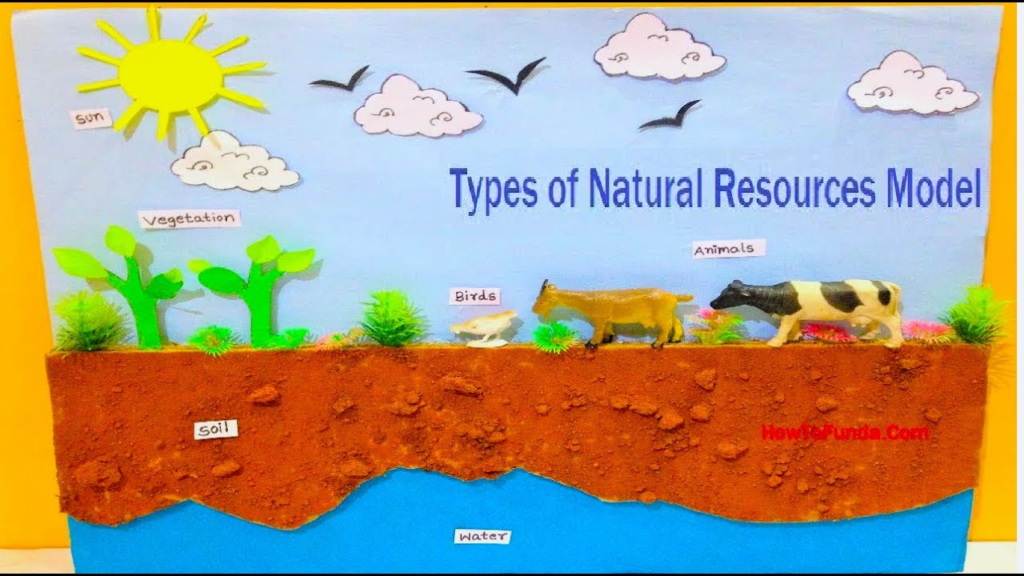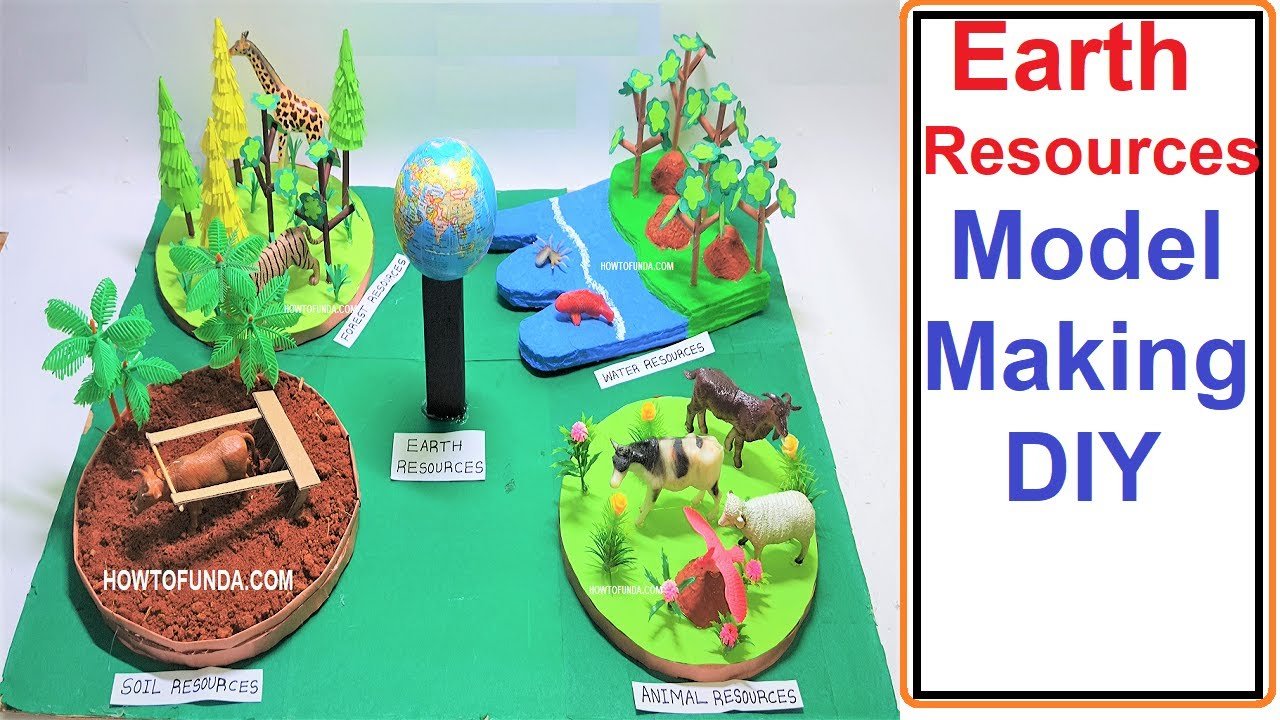Natural resources are the treasures that nature provides to all living organisms. They include air, water, soil, forests, minerals, fossil fuels, and biodiversity.

These resources are the foundation of life on Earth and are essential for survival, development, and progress. Without natural resources, human civilization cannot exist.
Natural resources are broadly classified into renewable resources (which can be replenished, such as sunlight, wind, forests, and water) and non-renewable resources (which are finite, such as coal, petroleum, and natural gas).
The increasing population and industrialization have put tremendous pressure on these resources. Over-exploitation is leading to resource depletion, environmental degradation, and global problems like climate change, deforestation, water scarcity, and biodiversity loss.
Therefore, it is our responsibility to understand the value of natural resources and adopt sustainable practices such as conservation, recycling, afforestation, renewable energy usage, and responsible consumption.
This project aims to study the different types of natural resources, their importance, present challenges, and methods of conservation.
1. Definition of Natural Resources
Natural resources are materials and components that occur naturally in the environment and are utilized by humans and other living beings for survival and development. They include everything from the air we breathe, the water we drink, the soil we cultivate, the forests that give us wood, to the minerals and fuels we use for energy.

2. Classification of Natural Resources
a) On the basis of availability:
- Renewable resources: Replenished naturally (sunlight, wind, forests, water).
- Non-renewable resources: Limited in nature (coal, petroleum, natural gas, minerals).
b) On the basis of origin:
- Biotic resources: Derived from living organisms (forests, animals, fossil fuels).
- Abiotic resources: Derived from non-living things (air, water, soil, minerals).
c) On the basis of distribution:
- Ubiquitous resources: Found everywhere (air, sunlight).
- Localized resources: Found only in specific regions (minerals, fossil fuels).
d) On the basis of development:
- Actual resources: Resources currently in use (coal, petroleum, forests).
- Potential resources: Resources that may be used in the future with better technology (uranium in Ladakh, wind power in coastal areas).
3. Importance of Natural Resources
- Survival of life – Air, water, and food are essential for all living beings.
- Economic development – Minerals, forests, and fossil fuels form the backbone of industries.
- Agriculture – Fertile soil, water, and sunlight support crop production.
- Energy production – Coal, petroleum, natural gas, wind, solar, hydro, and nuclear energy.
- Cultural and aesthetic value – Forests, rivers, and mountains are part of human culture and spirituality.
- Ecological balance – Forests regulate climate, water cycle, and oxygen balance.
4. Major Types of Natural Resources
(a) Air
- Provides oxygen for respiration and carbon dioxide for photosynthesis.
- Pollution due to industries and vehicles is a major problem.
- Conservation: Planting trees, reducing vehicular emissions, use of renewable energy.
(b) Water
- Covers 71% of Earth’s surface but only 3% is freshwater.
- Essential for drinking, irrigation, power generation, industries.
- Problems: Water pollution, scarcity, over-extraction of groundwater.
- Conservation: Rainwater harvesting, wastewater treatment, reducing wastage.
(c) Soil
- Basis of agriculture and plant growth.
- Problems: Soil erosion, desertification, overuse of fertilizers, deforestation.
- Conservation: Afforestation, crop rotation, contour ploughing.
(d) Forests
- Provide timber, medicines, oxygen, habitat for wildlife.
- Problems: Deforestation, forest fires, illegal logging.
- Conservation: Afforestation, social forestry, wildlife sanctuaries, eco-clubs.
(e) Minerals
- Basis of industries (iron, copper, aluminum, gold, uranium).
- Non-renewable and exhaustible.
- Conservation: Recycling, efficient mining, using substitutes.
(f) Fossil Fuels
- Coal, petroleum, natural gas provide energy.
- Overuse causes pollution and climate change.
- Conservation: Shift to renewable energy (solar, wind, hydro, biogas).
(g) Biodiversity
- Variety of plants and animals maintain ecological balance.
- Threats: Deforestation, hunting, habitat destruction.
- Conservation: National parks, gene banks, awareness.
5. Current Challenges in Natural Resources Management
- Overpopulation leading to excess demand.
- Deforestation for agriculture and urbanization.
- Pollution of air, water, and soil.
- Climate change due to greenhouse gases.
- Depletion of fossil fuels.
- Loss of biodiversity due to habitat destruction.
6. Methods of Conservation
- Afforestation and reforestation
- Rainwater harvesting
- Reduce, Reuse, Recycle
- Eco-friendly technology
- Awareness campaigns
- Use of renewable energy
- Laws and policies (Wildlife Protection Act, Environment Protection Act).
7. Case Studies
- Chipko Movement (1973, Uttarakhand): Villagers hugged trees to prevent deforestation.
- Silent Valley Project (Kerala): Saved tropical forest from being submerged by a dam.
- Rainwater Harvesting in Chennai: Helped reduce water scarcity.
8. Government Initiatives
- National Mission for a Green India
- National Solar Mission
- Wildlife Protection Act, 1972
- Environment Protection Act, 1986
- Project Tiger (1973)
- Namami Gange Mission
Conclusion
Natural resources are gifts of nature and the backbone of human survival and progress. However, unsustainable exploitation has caused severe problems like resource depletion, pollution, and climate change.
Every individual has a responsibility to conserve resources through sustainable living, afforestation, energy conservation, and waste management.
Governments, communities, and individuals must work together for a greener and sustainable future. If we fail to protect our natural resources, future generations will face scarcity and environmental crises. Conservation is not an option but a necessity.
Bibliography
- NCERT Class 9 Science Textbook
- Ministry of Environment & Forests – Government of India Reports
- www.un.org – Sustainable Development Goals
- www.nrdc.org – Natural Resources Defense Council

